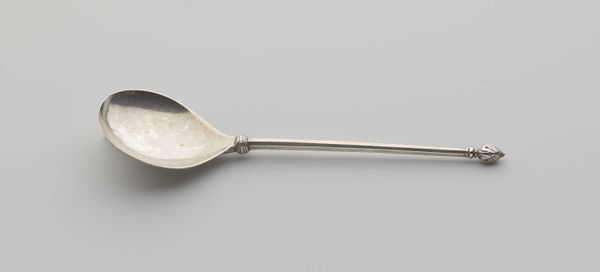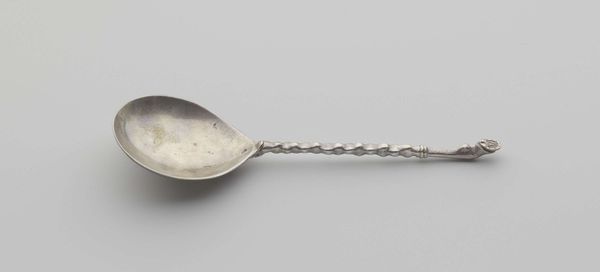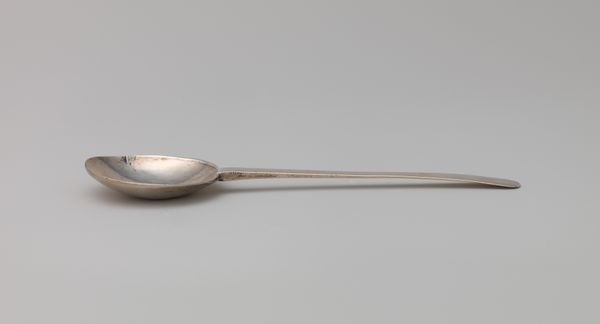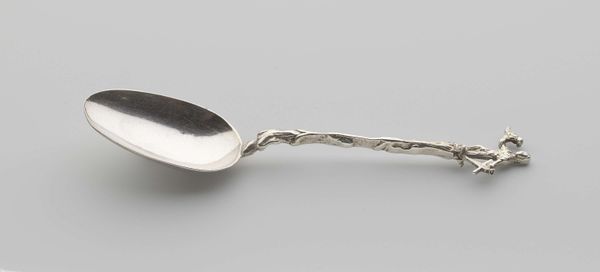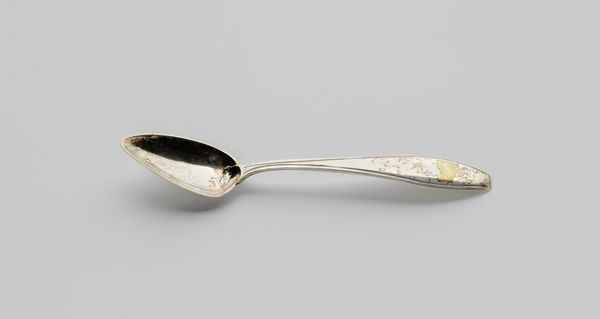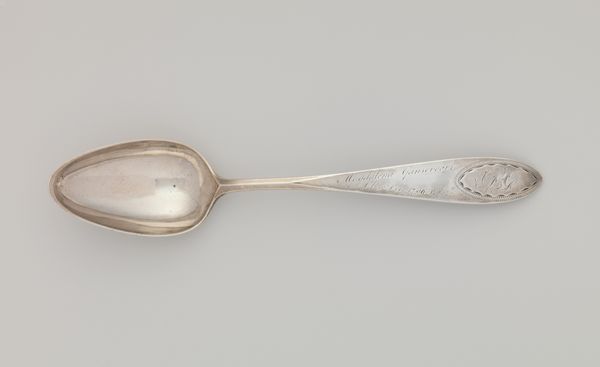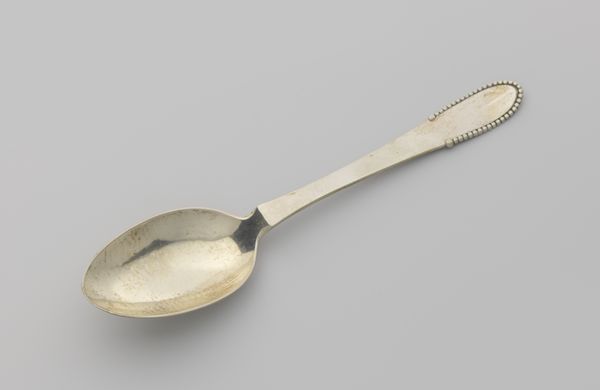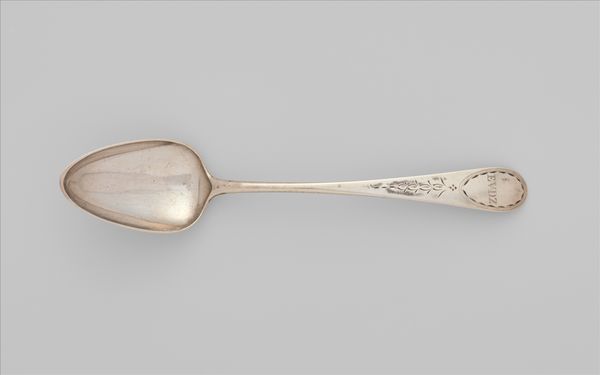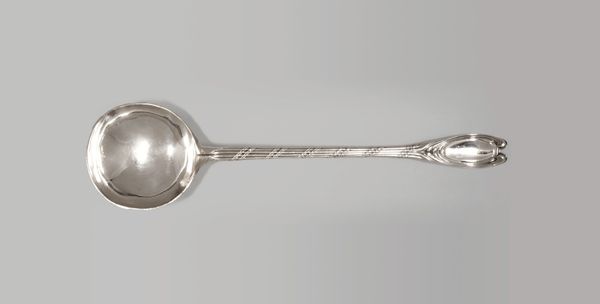
Lepel met peervormige bak en pilastervormige steel, bekroond met Johannes de Evangelist met de kelk. 1625 - 1650
0:00
0:00
silver, metal, sculpture
#
silver
#
baroque
#
metal
#
sculpture
Dimensions: length 17.6 cm, width 5.4 cm, weight 34.0 gr
Copyright: Rijks Museum: Open Domain
This silver spoon, likely made in the Netherlands during the 17th century by Lolle Jeltes, is crowned with an image of John the Evangelist holding a chalice. It makes us think about the public role of religious imagery in daily life. This spoon’s existence speaks to the complex interplay between faith, status, and material culture in the Dutch Golden Age. The figure of St. John transforms a mundane object into something more. Its religious symbolism connects the act of eating with Christian beliefs. In a time of religious upheaval, such objects likely served as subtle displays of faith, reinforcing social identities and networks. To fully appreciate this spoon, we need to delve into the visual culture of the period. What other ways did people express their religious beliefs? How did social class affect these expressions? By consulting period documents, religious pamphlets, and inventories of household goods, we can gain a richer understanding of its meaning.
Comments
No comments
Be the first to comment and join the conversation on the ultimate creative platform.
